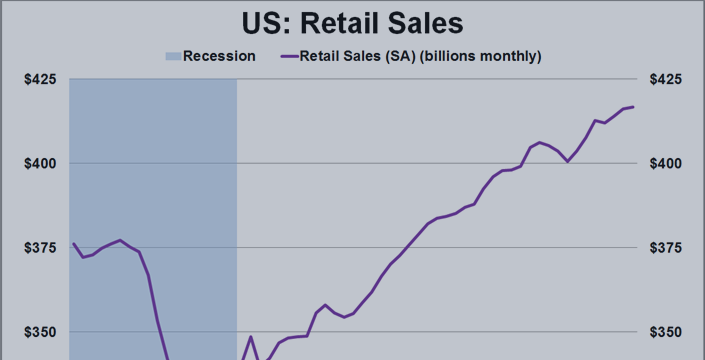
Video tutorial - Trade the News: How to Interpret the Retail Sales Number
In addition to the widely reported headline number, the report that is issued along with the retail sales number includes a breakdown of retail sales growth by category. With this in mind the report is not only a good indicator of overall consumer activity, but also for how different parts of the economy such as automobile, restaurant, clothing and electronics sales are fairing. If you are trading the stock of a company which sells products related to one of the categories reported in the retail sales release, then it is obviously important to understand that what happens with the growth of that category is most likely going to have a direct affect on the price of the stock that you are trading.
Like many of the things that we are discussing, the retail sales number is looked at not only for its timely reporting on growth in a large part of the economy, but also for its predictive powers regarding inflation. A healthy economy should show strong retail sales numbers, however if the number grows too quickly then there is a danger that growth in consumer demand will outpace supply growth, causing prices to rise and forcing the Fed to raise interest rates to reign in growth.
If for example we are in a period where inflation is thought to be
contained and growth is a worry, then a strong retail sales number
should rally the market. If however we are in a high growth period
already, then a strong number can cause market sell offs as participants
anticipate Fed interest rate increases to reign in growth.
As with every economic indicator we study, remember that markets
anticipate, so the market reaction will more times than not have a
greater dependence on where the number comes out in regards to the
consensus estimates, rather than how strong or weak the reported number
is in relation to previous numbers. If the number comes out in line
with estimates then at least in theory this should already be priced
into the market and therefore market volatility after the number should
be contained. If however the number comes in off estimates then you can
see dramatic market volatility, the size of which is going to depend on
how far the number comes in off estimates and where we are at in the
business cycle.


